Top 9 Interesting Facts about Edinburgh
There is so much to learn about Edinburgh, which is such an underappreciated travel destination. Dark alleys, eerie cemeteries, and medieval structures. Here ... read more...are some interesting facts about Edinburgh to get you set for mystery and intrigue.
-
What has made Edinburgh renowned in contemporary literature? Mr. Potter! Although the Harry Potter books are set in England, Edinburgh is where they were originally written. At the time, Rowling was a resident of Scotland and drew a lot of inspiration from her surroundings. Most of J.K. Rowling's writing time was spent at the Elephant House Cafe (which is now home to a mural for Dobby). While residing in Edinburgh, she wrote the majority of the Harry Potter books, finding a lot of inspiration there.
If you know where to look, you may locate a lot of familiar landmarks in Edinburgh, which served as the backdrop for several sequences in the Harry Potter movies. Take a Harry Potter tour, look up a location guide online, or just go exploring and see what you can spot. A few Potter-themed stores are also available to help you feel inspired. This is one of the interesting facts about Edinburgh.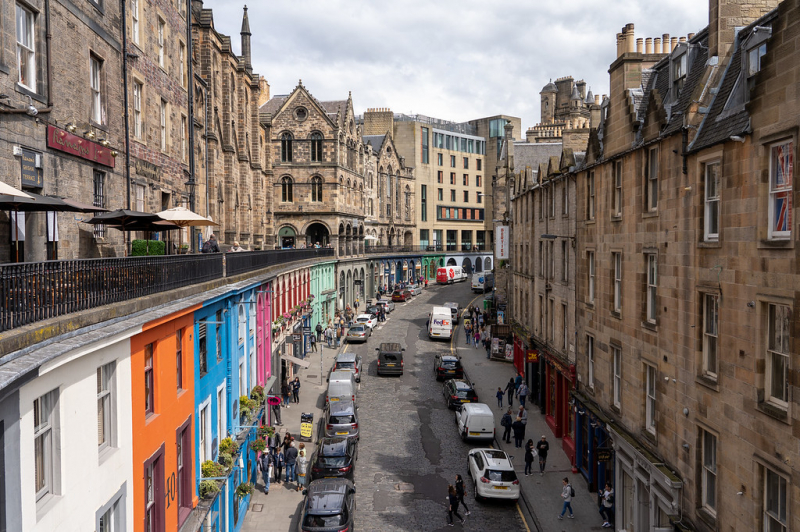
Photo: A Dangerous Business 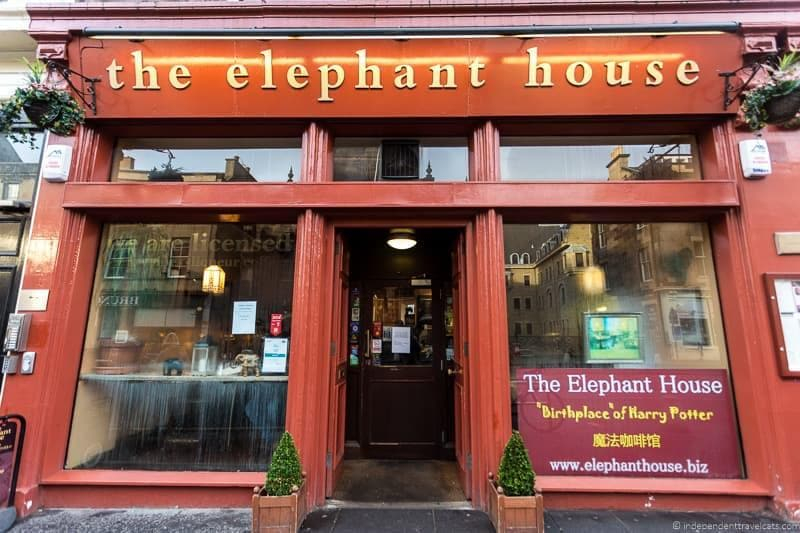
Photo: Independent Travel Cats -
Old Town, the city's first and oldest neighborhood, still preserves a lot of its original medieval architecture. But the 1700s-era neighborhood known as New Town might be less fittingly called. The layout of the New Town neighborhood was inspired by a squared-off Union Jack. Together, Old Town and New Town are classified as UNESCO World Heritage Sites.
The Royal Mile, which runs for one Scottish mile between Edinburgh Castle and the Palace of Holyroodhouse, is the focal point of Edinburgh's Old Town. The majority of the still-standing structures in this area are from the 12th to the 17th centuries. You can feel as though you've traveled back in time among the crooked medieval buildings and small cobblestone alleyways, which are surrounded by Edinburgh's oldest history. There is a lot to see and do in this area, including numerous historic sights, eccentric independent stores, and old-fashioned taverns. After you've finished exploring the surface, you can even go underground, where a fascinating underworld awaits. Some claim that Edinburgh's Old Town is among the most spooky places on earth. Whatever your point of view, there are plenty of tales and traditions about the city's former inhabitants to be found here. To learn more about them, join a walking tour starting on the Royal Mile.
Between 1766 and 1820, Edinburgh's New Town was constructed. The majority of the buildings in this area are Georgian neoclassical structures, heavily influenced by Greek architecture. Everything is quite opulent and exquisite, and the streets are considerably straighter and larger. Designer stores, swanky cocktail bars and eateries, stunning art galleries, and commanding architecture rule this area. The neighborhood looks and feels considerably differently from Old Town. But there is still plenty to look into and learn about nearby. The main streets are George Street and Princes Street, with the upscale West End at one end and the breathtaking Calton Hill at the other. The Old and New Towns are divided by the lovely public park known as Princes Street Gardens.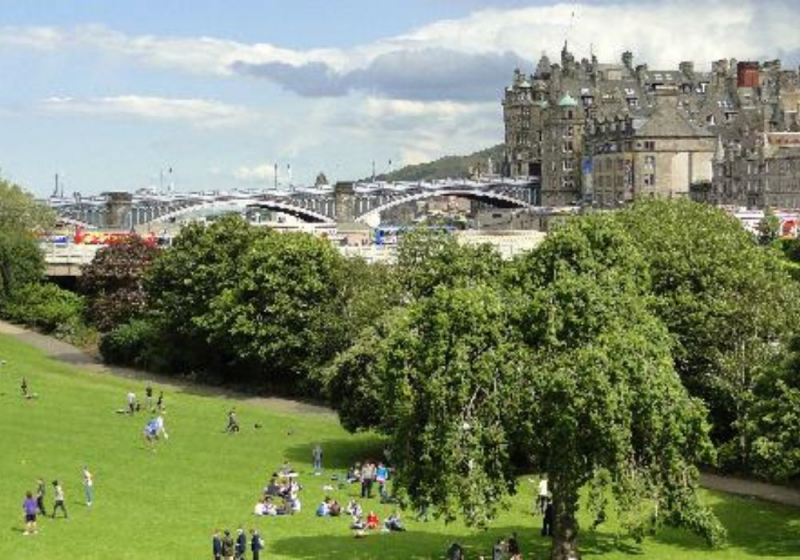
Photo: Tripadvisor 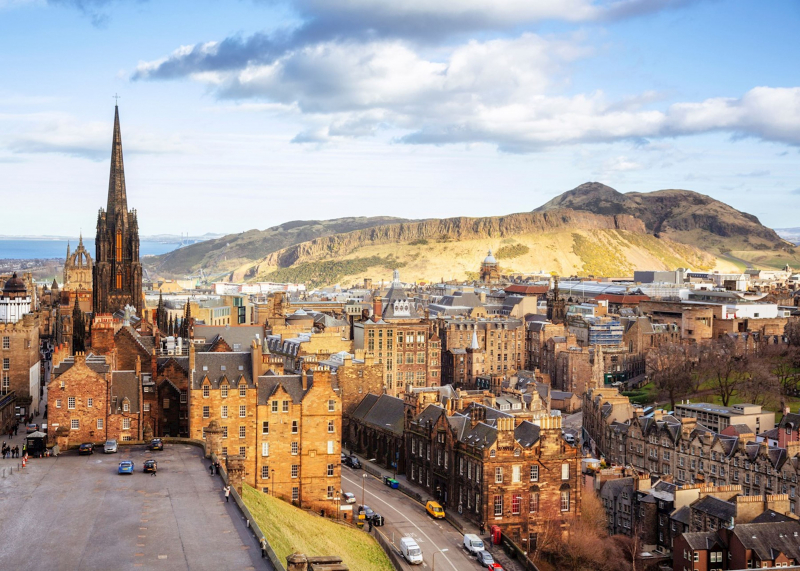
Photo: Audley Travel -
What festival-related reputation does Edinburgh have? The Fringe in Edinburgh! Edinburgh's population increases every year as the city plays host to the biggest cultural festival in the world for virtually the whole month of August! The massive 55,000 performances at the Edinburgh Fringe Festival, popularly known as The Fringe, take place in more than 300 locations. This festival, which began in 1947, honors all forms of performing arts, including theater, comedy, and cabaret.
The world's largest celebration of art and culture is the Edinburgh Festival Fringe. Edinburgh, Scotland, receives a global influx of creative energy over three weeks in August. Its history began in 1947 when eight theater companies showed up at the Edinburgh International Festival without being invited. As more and more performers imitated them year after year, the Festival Fringe Society was founded in 1958 as a reaction to the success of this expanding trend.
Its bylaws were drafted in accordance with the philosophy that first attracted these theater groups to Edinburgh in 1947 and stated that the Society would not be involved in selecting the festival's schedule.
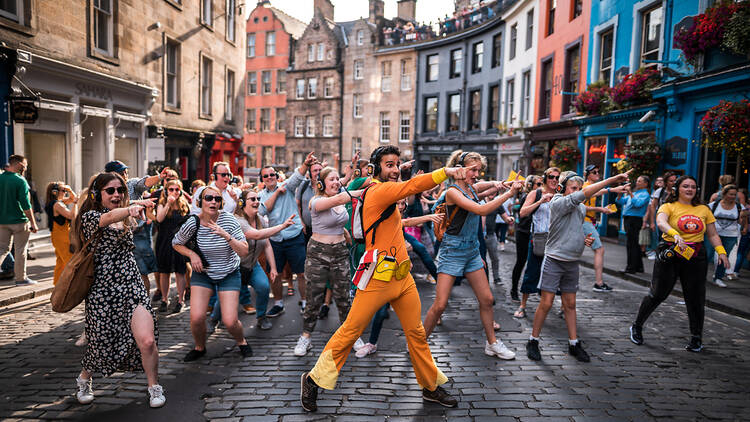
Photo: Time Out 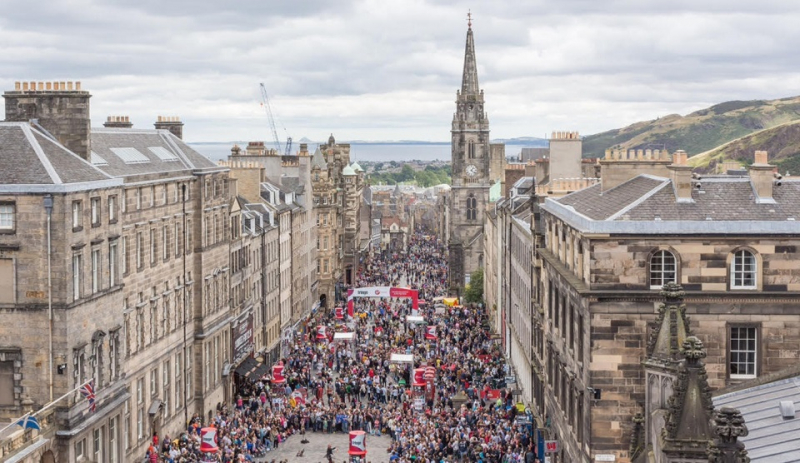
Photo: Aesthetica Magazine -
Since the city's population was expanding quickly in the 19th century, there wasn't much room for residences in Old Town. People started converting basements and cellars into homes to maintain the security of living inside the wall.
Many less privileged families lived in this underground network, which was dark, claustrophobic, and unhygienic. These underground homes were abandoned and frequently destroyed as the city grew outside the fortifications. You can, however, take a trip to visit this underground metropolis if you're interested. The most fascinating fact about Edinburgh may be this one! Did you know that the current Old Town Edinburgh is not the city's original settlement? A metropolis that was once constructed is still buried beneath. It was covered in rubble up until 1985 to keep off businesspeople and the underprivileged.
Undoubtedly, criminals lurked in these cobblestone streets, mixing with the city's aristocracy, merchants, and common folk. Many of their misdeeds are chronicled in historical accounts and artistic representations. But there are innumerable tales that have yet to be told, dark secrets that are permanently tucked away in the narrow, enigmatic alleyways that add character to Edinburgh's charming streets. There is a maze of streets, tunnels, and vaults beneath the city. These were Edinburgh's original streets before buildings were erected on top of them, burying lively streets and transforming them into ghost towns.
Originally South Bridge's arches, the vaults were once used by traders and merchants before becoming uninhabitable as a result of moisture leaking through from the bridge above. The poorest people in the city moved into these cramped, dangerous, and gloomy vaults. Edinburgh's subterranean was eventually discovered and the illegal occupants were kicked out, leaving the vaults filled with rubble until 1985, when it was restored to its former, eerie beauty.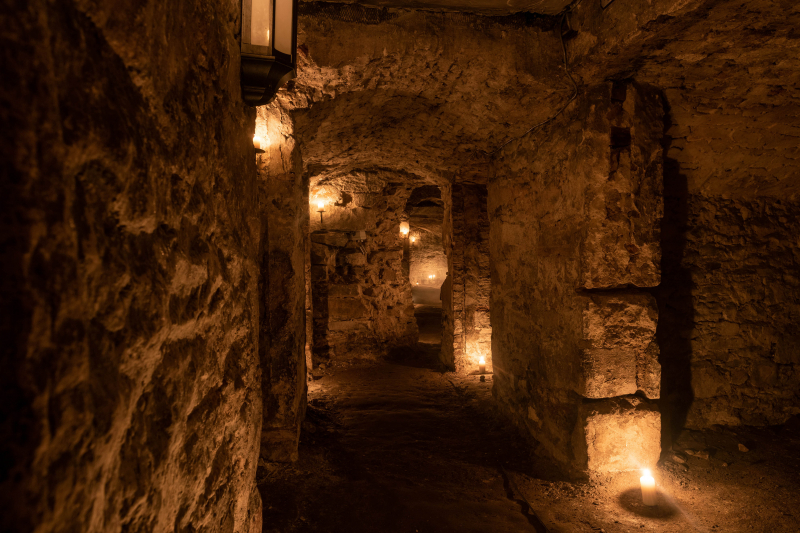
Photo: Mercat Tours 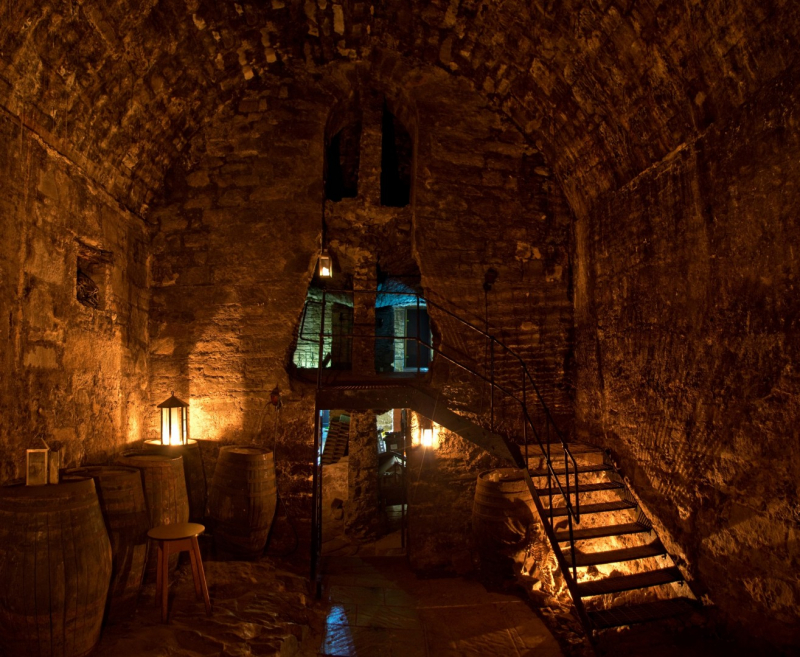
Photo: VisitScotland -
In order to protect the town from those attempting to conquer Edinburgh, the Nor Loch, often referred to as the North Loch, was first and foremost constructed.
Despite being largely man-made, the Nor Loch in Edinburgh had its beginnings as a natural hollow during the last Ice Age in Britain. From the foot of Castle Hill to Market Street and Waverley Station, the loch blanketed the marshy terrain. One of the spookiest and most intriguing facts about Edinburgh is that the location, which was formerly a lake that was converted into a sewer and a burial site for corpses, is now known as Princes Street Gardens.
Nor Loch was severely polluted because it was utilized for both inexpensive body disposal and storage of raw sewage. It was rumored that the smell was intolerable. At least 300 witch trials are thought to have taken place in the aforementioned, extremely polluted Nor Loch. The majority of the 'witches' during the 16th and 18th centuries would be put to the test by diving into Loch Ness. If they lived, it was assumed that they were guilty and would receive a death sentence. It was assumed that they had been innocent if they had been demised during the trial. The Nor Loch has a few tales to tell about the history of the city, including how it contributed to the creation of Edinburgh's other name, Auld Reekie.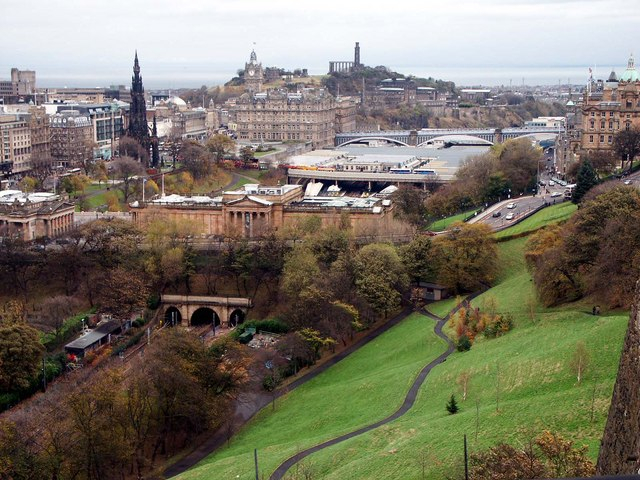
Photo: Wikimedia Commons 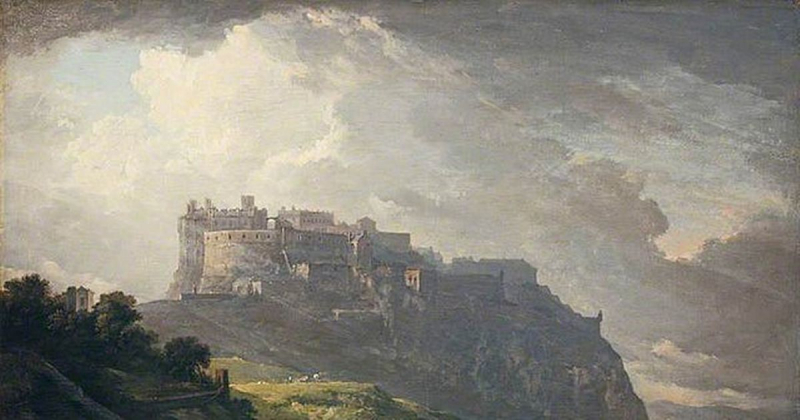
Photo: Wikimedia Commons -
Due to its reputation, Edinburgh was given the moniker Auld Reekie, which translates to "Old Smokey," in the 17th century. Although this moniker may not have been desired, it was absolutely appropriate. Poor air quality prevailed as a heavy fog blanketed the city. This resulted from coal being burned for the fire in its heavily populated center.
In addition to the fog, Nor Loch was also filled with an offensive odor (the lake that used to border the city). Although it didn't always emit foul odors, it had evolved into a graveyard for dead people and trash over time.
A few centuries later, Edinburgh, Scotland, completely changed the course of history. It's current ranking as the UK's greenest city stands in stark contrast to its previous reputation for filth and stench. It is the best city since it has the least pollution and the most open area (112 parks). What irony!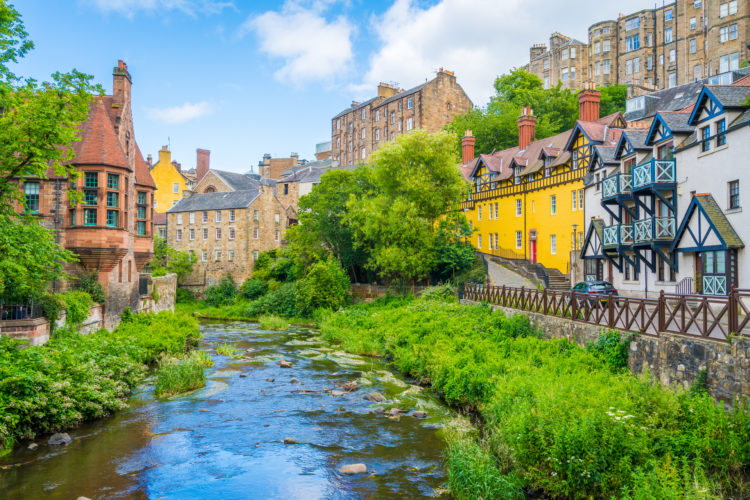
Photo: salaguamotors 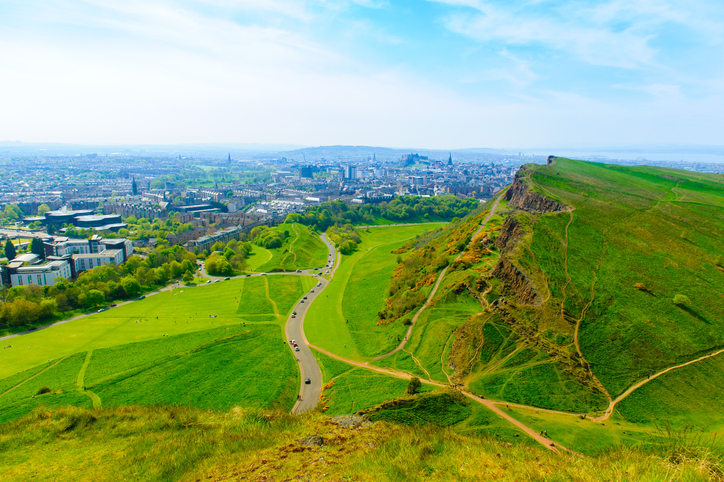
Photo: www.qmile.com -
Another interesting fact about Edinburgh is all about fire! Did you know that James Braidwood, a native of Edinburgh, was responsible for developing the modern firefighting methods? Nobody understood how to put out a fire properly before Braidwood. It was a group endeavor.
He acknowledged that the best way to get to the source of the fire was within the structure and stressed the significance of training men. His strategies were put into practice in London since they were so successful. Up until a blazing wall collapsed on him in 1861, he was the leader of the pack and still putting out fires at the age of 60. Since virtually prehistory, the modern Fire Brigade has developed over many years of advancements. Since the day when man first found fire, he has also fought to contain the fire.
In the third century BC, under Augustus' authority, the history of the firefighter began in ancient Rome. There is proof that firefighting was practiced earlier, in Ancient Egypt.
The first systematic firefighting in Britain is thought to have started during the Roman conquest in AD43. Even then, the only effective firefighting tools were frequently buckets of water. Following the Romans' departure, villages started to disintegrate, and firefighting suffered as a result. Due to a scarcity of firefighters and the fact that most buildings were made of wood, many medieval cities simply burned to the ground. Eventually, several parishes established fundamental firefighting, but there were no rules or requirements in place.
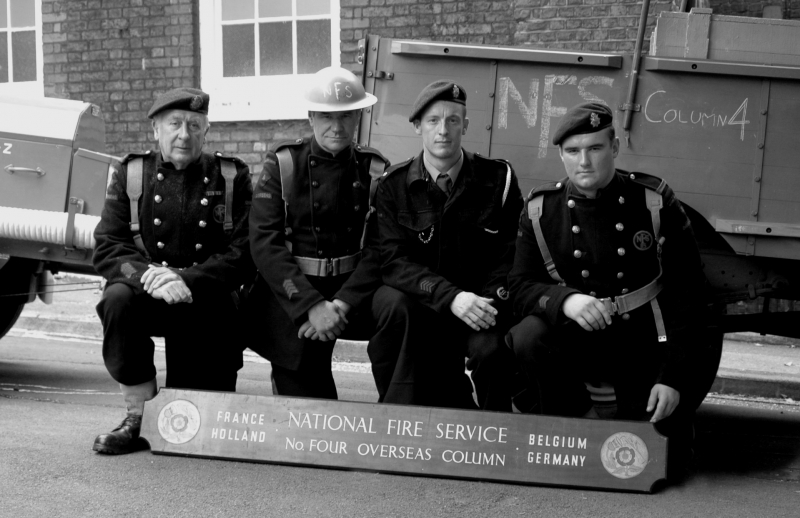
Photo: Fire Fighters Foundation 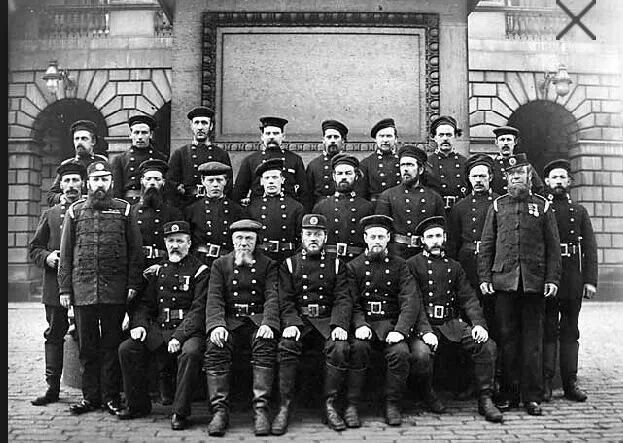
Photo: Pinterest -
As you can see, Edinburgh is renowned for some honorable discoveries, but the following one won't be. They are also proud of having created the expression "Shit faced", along with the first security system or the creation of the fire brigade. The phrase people use to describe someone who is intoxicated to the point of blackout. Well, it didn't always mean that even though being inebriated was undoubtedly a part.
The funniest thing was this: "Edinburgh was a festering unpleasant stinking mess during the periods when people didn't have bathrooms". It is also perched atop a hill, whose base once housed lakes from which the city drew its drinking water. Due to the lack of facilities, people had to store their waste in buckets before tossing it out their windows and onto the street below, which is why Edinburgh is so filthy. Additionally, the matter would spread through the streets and into the lakes, rendering them unusable.
A new regulation known as the Nastiness Act was passed because the haphazard tossing of objects out of windows put individuals in danger of being struck by them. As a result, people could only toss their garbage out of windows between the hours of 10 pm and 5 am. Throwers were required to shout "gard l'eau", which is French for "Mind the Water".
However, due to the city's drinking water issue, everyone was intoxicated and could only consume booze. Since the very inebriated people frequently waited too long to realize what was occurring when someone shouted "gard l'eau", before they could get out of the way, the falling matter or water would land on their faces, giving rise to the term "Shit Faced".
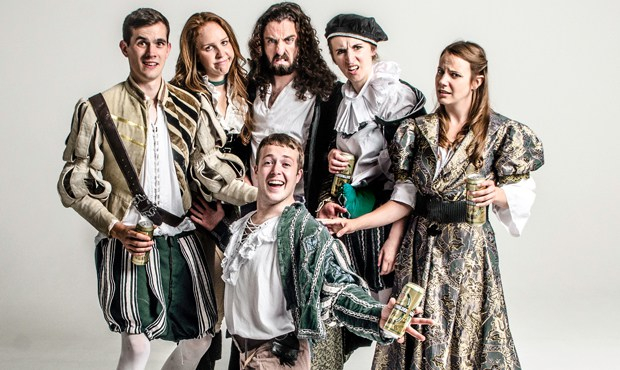
Photo: The Reviews Hub 
Photo: Eventfinda -
The question you've all been waiting for is finally here! If a legendary species doesn't even exist, how can it be a national animal? An interesting fact about Edinburgh is that the unicorns are their national animal.
Fables and traditions that were passed down from ancestors form the bulk of Scotland's history. Unicorns are consistently portrayed as strong, powerful creatures in Celtic mythology. They would battle to avoid being defeated, just like the Scots. As early as the 12th century, unicorns might be found on Scotland's royal coat of arms.
You'll see that they're frequently shown wearing chains around their necks. It is thought that the shackles represent the strength of Scottish rulers, signifying that they were able to subdue the ferocious animal.
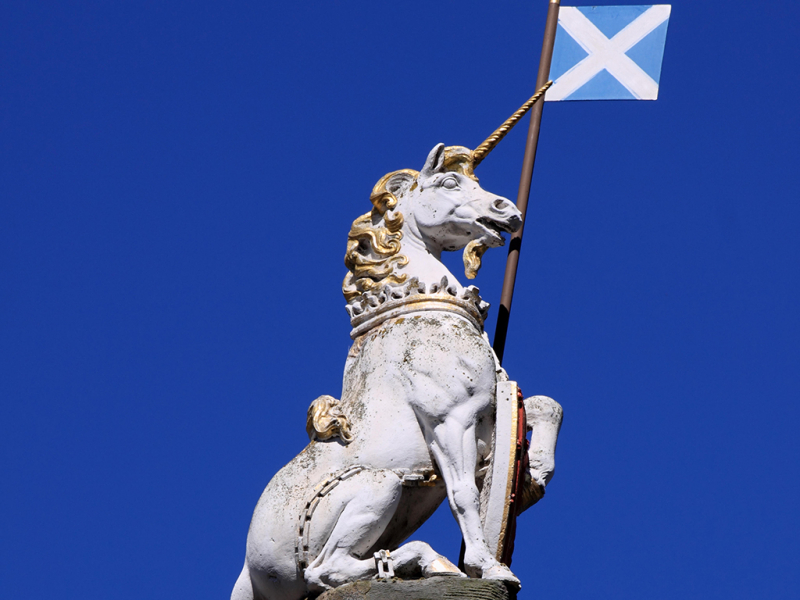
Photo: Discover Britain 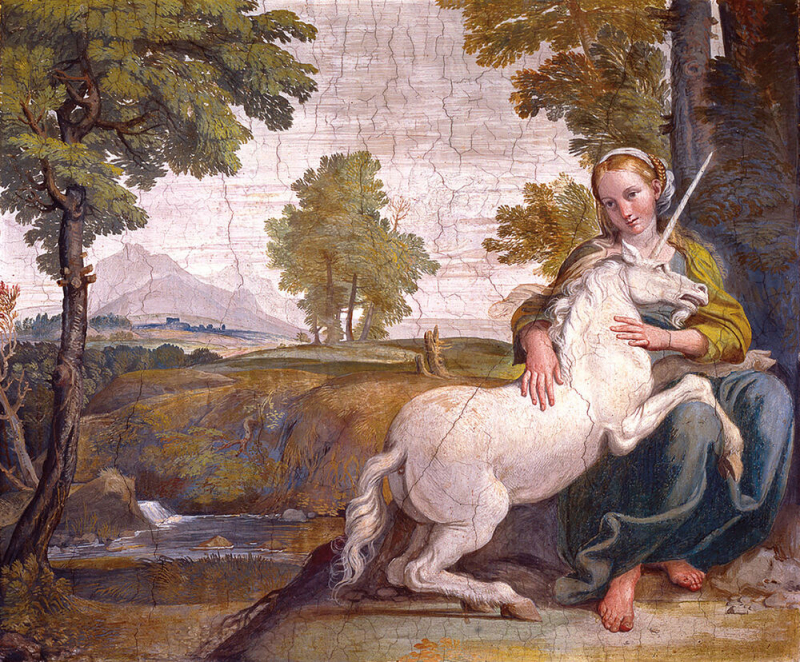
Photo: National Trust for Scotland






























